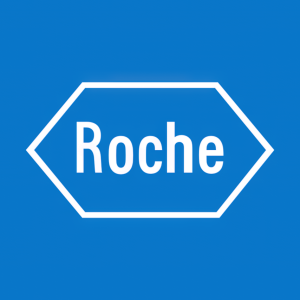Genentech’s Vabysmo Showed Extended Durability, Continued Efficacy and a Consistent Safety Profile in Long-Term Diabetic Macular Edema (DME) Study
– More than
– People treated with Vabysmo sustained vision gains and anatomical improvements, with almost
– The study met all primary endpoints showing safety data were consistent with Vabysmo's known safety profile –
– This is the largest long-term extension dataset in DME to-date, demonstrating consistent positive results in a highly prevalent eye condition –
“These four-year data build on our pivotal studies and reinforce Vabysmo’s potential to become standard of care treatment for diabetic macular edema (DME), which affects 29 million people worldwide,” said Levi Garraway, M.D., Ph.D., Genentech’s chief medical officer and head of Global Product Development. “We are especially pleased to see that 9 out of 10 patients showed no sign of DME after four years of treatment with Vabysmo, which is an incredible long-term outcome for people living with this condition.”
The
“I have been using Vabysmo as a first-line treatment for all the approved indications, including diabetic macular edema, and the positive long-term safety and efficacy results from the
During
To date, Vabysmo is approved in nearly 100 countries for DME and wet, or neovascular, age-related macular degeneration (AMD). It is also approved in several countries, including
Genentech is committed to helping people access the medicines they are prescribed and offers comprehensive services for people prescribed Vabysmo to help minimize barriers to access and reimbursement. Patients can call 833-EYE-GENE for more information. For people who qualify, Genentech offers patient assistance programs through Genentech Access Solutions. More information is also available at (866) 4ACCESS/(866) 422-2377 or http://www.Genentech-Access.com.
Visit https://www.Vabysmo.com for additional information.
About
The primary objectives were to evaluate the long-term safety and tolerability of Vabysmo, including ocular adverse events (AEs), non-ocular AEs and presence of anti-drug antibodies. The study also had an exploratory objective to assess the long-term efficacy of Vabysmo.
About Diabetic Macular Edema
Affecting approximately 750,000 people in
About the Vabysmo® (faricimab-svoa) Clinical Development Program
Genentech has a robust Phase III clinical development program for Vabysmo. The program includes AVONELLE-X, an extension study of TENAYA and
About Vabysmo® (faricimab-svoa)
Vabysmo is the first bispecific antibody approved for the eye. It targets and inhibits two signaling pathways linked to a number of vision-threatening retinal conditions by neutralizing angiopoietin-2 (Ang-2) and vascular endothelial growth factor-A (VEGF-A). While research is underway to better understand the role of the Ang-2 pathway in retinal disease, Ang-2 and VEGF-A are thought to contribute to vision loss by destabilizing blood vessels, which may cause new leaky blood vessels to form and increase inflammation. By blocking pathways involving Ang-2 and VEGF-A, Vabysmo is designed to stabilize blood vessels.
Vabysmo
Vabysmo (faricimab-svoa) is a prescription medicine given by injection into the eye, used to treat adults with neovascular (wet) age‑related macular degeneration (AMD), diabetic macular edema (DME) and macular edema following retinal vein occlusion (RVO).
Important Safety Information
Contraindications
Vabysmo is contraindicated in patients who have an infection in or around their eye, have active swelling around their eye that may include pain and redness, or are allergic to Vabysmo or any of the ingredients in Vabysmo.
Warnings and Precautions
- Injections like the one for Vabysmo can cause an eye infection (endophthalmitis) or separation of layers of the retina (retinal detachment). Patients should seek medical care if they experience increasing eye pain, vision loss, sensitivity to light, or redness in the white of the eye.
- Vabysmo may cause a temporary increase in pressure in the eye (intraocular pressure), which occurs 60 minutes after the injection.
- Although not common, Vabysmo patients have had serious, sometimes fatal, problems related to blood clots, such as heart attacks or strokes (thromboembolic events). In clinical studies for wet AMD during the first year, 7 out of 664 patients treated with Vabysmo reported such an event. In DME studies from baseline to week 100, 64 out of 1,262 patients treated with Vabysmo reported such an event. In clinical studies for RVO during 6 months, 7 out of 641 patients treated with Vabysmo reported such an event.
- Retinal vasculitis and/or retinal vascular occlusion, typically in the presence of intraocular inflammation, have been reported with the use of Vabysmo. Healthcare providers should discontinue treatment with Vabysmo in patients who develop these events. Patients should be instructed to report any change in vision without delay.
Adverse Reactions
The most common adverse reactions (≥
Pregnancy, Lactation, Females and Males of Reproductive Potential
- Based on how Vabysmo interacts with your body, there may be a potential risk to an unborn baby. Patients should use birth control before their first injection, during their treatment with Vabysmo, and for 3 months after their last dose of Vabysmo.
- It is not known if Vabysmo passes into breast milk. Patients should talk to their healthcare provider about the best way to feed their baby if they receive Vabysmo.
Patients may report side effects to the FDA at (800) FDA-1088 or http://www.fda.gov/medwatch. Patients may also report side effects to Genentech at (888) 835-2555.
Please see additional Important Safety Information in the full Vabysmo Prescribing Information or visit https://www.Vabysmo.com.
About Genentech in Ophthalmology
Genentech is researching and developing new treatments for people living with a range of eye diseases that cause significant visual impairment and blindness, including wet age-related macular degeneration (AMD), diabetic macular edema (DME), diabetic retinopathy (DR), geographic atrophy (GA) and other retinal diseases, including rare and inherited conditions.
About Genentech
Founded more than 40 years ago, Genentech is a leading biotechnology company that discovers, develops, manufactures and commercializes medicines to treat patients with serious and life-threatening medical conditions. The company, a member of the Roche Group, has headquarters in
View source version on businesswire.com: https://www.businesswire.com/news/home/20240717487336/en/
Media Contact:
Shirley Dang, (650) 467-6800
Advocacy Contact:
Danielle Haney, (240) 805-4810
Investor Contacts:
Loren Kalm, (650) 225-3217
Bruno Eschli, +41 61 687 5284
Source: Genentech







